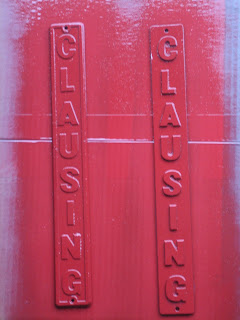 As you can tell by the dates, it's been a heavy semester and I've had very little time to work on the lathe project. About the only thing I managed to do was create a place for my new surface plate and finally get it out of the kitchen. I had this roll around cart which is pretty heavy duty and the same size as the plate. However, it was a bit low to use. So, I built a wood drawer unit where I can put tools related to the plate. It turned out very nice, I think. I also had some drawer slides from a previous project and made a shelf underneath that pulls out. I put the Enco 12x18 plate on it. I figure I might sometimes want to use it for measuring, especially if the top plate is significantly blued. My old plate is on the bottom, so this unit weights close to 400 pounds, now. But, it's pretty stable when working on it.
As you can tell by the dates, it's been a heavy semester and I've had very little time to work on the lathe project. About the only thing I managed to do was create a place for my new surface plate and finally get it out of the kitchen. I had this roll around cart which is pretty heavy duty and the same size as the plate. However, it was a bit low to use. So, I built a wood drawer unit where I can put tools related to the plate. It turned out very nice, I think. I also had some drawer slides from a previous project and made a shelf underneath that pulls out. I put the Enco 12x18 plate on it. I figure I might sometimes want to use it for measuring, especially if the top plate is significantly blued. My old plate is on the bottom, so this unit weights close to 400 pounds, now. But, it's pretty stable when working on it.I found the 12x18 very restrictive when spotting, so I'm hoping to get back to scraping pretty soon and see how much better I like this larger plate. I'm very proud to get such a high quality plate for such a small amount of money and, as far as I can tell, it's in perfect condition. I love quality tools.







































